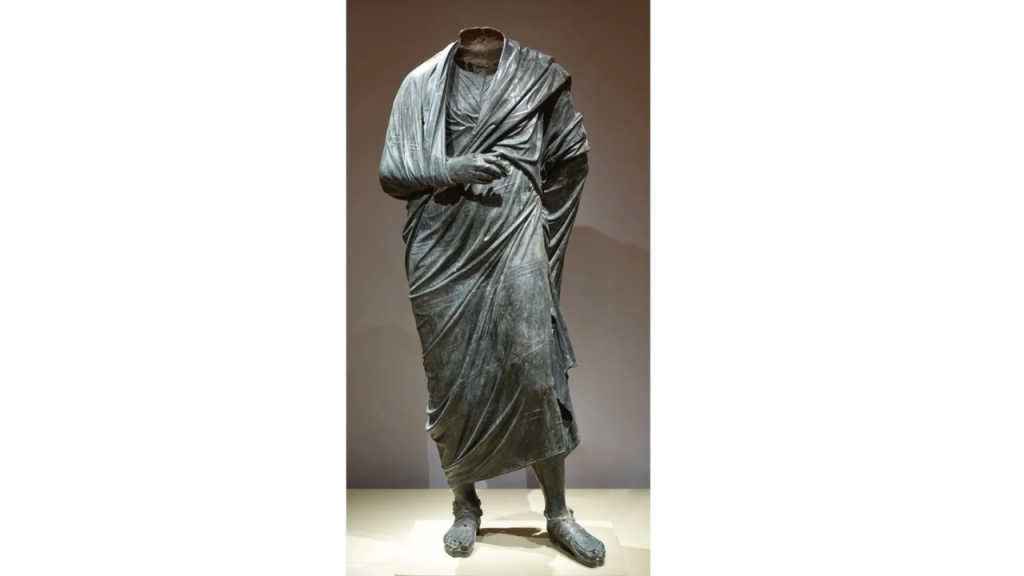Introduction
In a recent development that has sent shockwaves through the art world, a New York County Supreme Court Judge has signed a warrant for the seizure of a valuable bronze statue from Ohio’s renowned Cleveland Museum of Art. This action comes as part of a broader investigation into the alleged trafficking of antiquities originating from Turkey, pursued by the Manhattan District Attorney’s office.
The Statue in Question
The 76-inch-tall bronze statue under scrutiny is a remarkable representation of a robed man, notable for its absence of a head. Estimated to be worth a staggering $20 million, the statue has been a prominent piece within the museum’s collection. Initially believed to depict the great Roman emperor Marcus Aurelius, it held a prominent position in the Greek and Roman galleries at the museum.
Acquisition and Controversy
The Cleveland Museum of Art acquired this enigmatic statue in 1986. However, the controversy surrounding its origins began to surface long before the recent warrant. In 2012, Turkey raised concerns about the statue, alongside a list of 22 other items held in the museum’s collection, alleging that these artifacts had been looted from their country.
Museum’s Response
The museum has not taken these allegations lightly. Todd Mesek, a spokesperson for the Cleveland Museum of Art, emphasised the institution’s commitment to addressing provenance issues responsibly. He stated that the museum reviews claims to objects in its collection meticulously, but as a matter of policy, does not discuss such claims publicly.
Altered Description
A notable change in recent times is the description of the statue on the museum’s website. Initially labeled as “The Emperor as Philosopher, probably Marcus Aurelius (reigned AD 161-180),” it has been altered to “Draped Male Figure.” This change could reflect the ongoing uncertainty regarding the statue’s true origin.
Conclusion
The seizure of the headless bronze statue marks a significant development in the investigation into alleged antiquities trafficking from Turkey. The Cleveland Museum of Art’s careful approach to addressing provenance issues underscores the importance of preserving the integrity of cultural heritage, while the evolving description of the statue keeps the mystery surrounding its origins alive. As the investigation progresses, it remains to be seen how this case will impact the world of art and antiquities.
Feature Image: The 76-inch bronze statue was removed from view earlier this year. COURTESY OF THE CLEVELAND MUSEUM OF ART
11 Famous Artworks of Damien Hirst: Exploring Life and Death.

Contributor





